It’s the electric fan! While fans are not typically regarded as a groundbreaking invention, their role in the course of human civilization is surprisingly significant.

When we find ourselves in spaces without air conditioning or out on the streets during the scorching midday sun, we come to truly appreciate the gentle breeze from a handheld fan.
Any piece of cardboard can create a cool breeze, but throughout history, handheld fans have held deeper meanings beyond just providing a refreshing wind: they have been fashion statements, symbols of class, and effective political tools, according to documentation from a 2004 traveling exhibition at the Wisconsin History Museum.
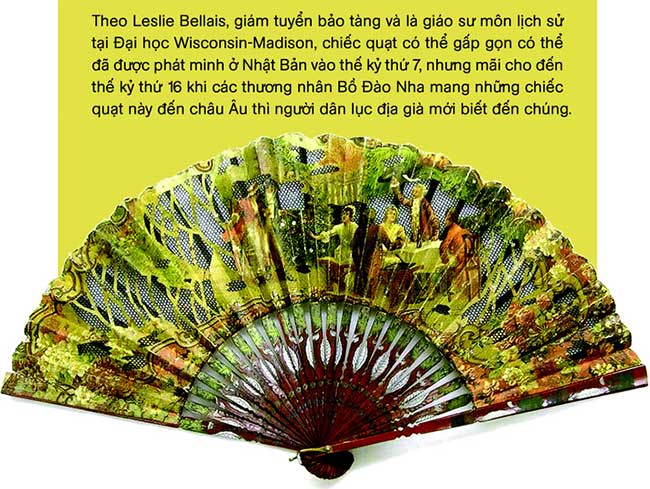
Fashion during this period was characterized by heavy, fitted clothing, making the task of staying cool quite important.
The European aristocracy quickly began to carry expensive folding fans made from precious materials, adorned with gemstones, sequins, and intricate hand-painted designs.
However, these eye-catching fans fell out of favor by the late 18th century when European women started wearing wide Empire-style dresses, which were considered unsuitable for accessories.
By the early Victorian era, the fashion style featuring fitted clothing, heavy skirts, and thick materials returned not only in Europe but also across much of America, including the influx of European immigrants settling in Wisconsin. Along with them came the handheld fans.

A traditional Ankara hand fan.
During this industrialized era, lithography and other advancements in mass production made decorative printed fans accessible to a wider audience.
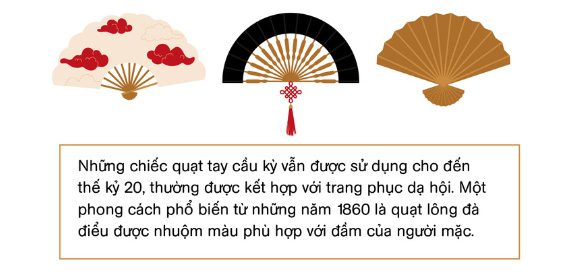

By the 1920s, this was the only style still widely used.
In the 1930s, American women began to prefer holding a cigarette or a cocktail glass over a fan, and the popularity of electric fans gradually led to the decline of traditional handheld fans.

“The electric fan is one of the most important electrical inventions of all time. It is a building block for other advanced technologies” – The Edison Technology Center begins its overview of the history of the electric fan.
American engineer Schuyler Wheeler was the first to apply electric current to create a product that helped people combat heat in 1886: the electric fan.
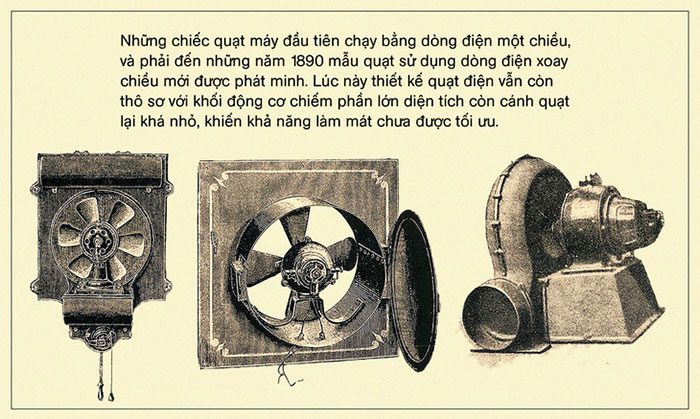
By the late 1920s, General Electric (GE), co-founded by Thomas Edison, presented an improved design with broad blades stacked like flower petals, allowing the fan to run much more quietly than before.
During this time, inventors also added features that enabled the fan blades to rotate around a base axis instead of remaining stationary, extending the cooling range.
Along with performance improvements came greater attention to safety issues.
The original iron cage structure was primarily to protect the expensive blades, but over time, the bars of the cage became closer together to prevent accidents for the users.
With enhanced cooling abilities and increased safety, the number of households in America owning at least one electric fan multiplied throughout the 20th century.
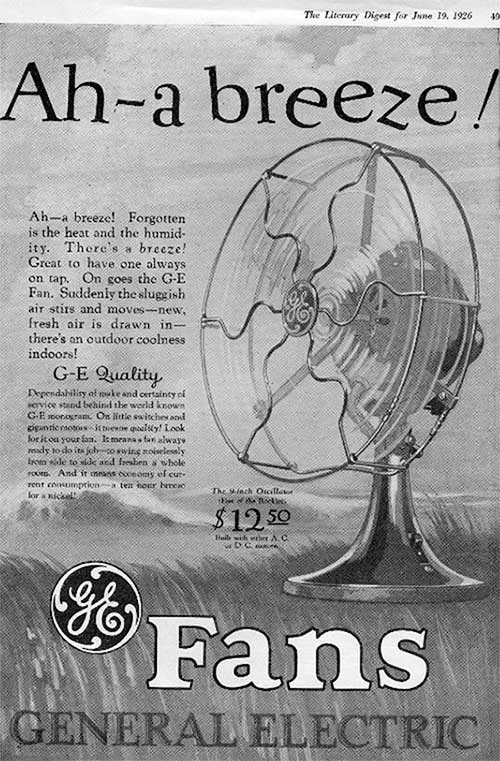
An advertisement for an electric fan produced by General Electric in 1926. (Image: Google Arts & Culture).
The colors and designs of electric fans also became more diverse, replacing the traditional black as materials like plastic and wood began to be more commonly used in designs.
The desire for comfort continued beyond just electric fans. In the 1950s, air conditioning units became increasingly popular in American households.


In October 2009, consumer electronics company Dyson introduced a new product to the market with a rather bold name: Air Multiplier.
In reality, it’s a wind-generating device similar to a fan, but the unfortunate issue is that no one can discern where the blades are located. Its design is simply a flat circle mounted on a stand.
The secret lies in the base of the fan, which contains an electric motor and blades that push air into the circular tube above.
The air runs through this component until it escapes through a small opening, creating a stream of air blowing forward, even though there are no visible moving parts.
The air from the “bladeless fan” is marketed as being smoother and quieter than a conventional fan due to the physical mechanism that prevents interruptions in airflow.
Want to “capture the wind” to take with you everywhere during the hot summer afternoons? There’s the convenient “neck fan”, touted as a savior for those who must work outdoors, like athletes or delivery personnel.
In South Korea, sales of summer appliances, including neck fans, surged as heatwaves and humid weather persisted last year, according to The Korea Herald.
Modern electric fans are primarily made from plastic and require less space, materials, and energy than before, making them suitable for cooling small devices like computers and laptops.
Cooling fans are a crucial part of computers, not only helping with air circulation within the case but also providing dedicated cooling for the CPU, which is the component most prone to overheating.
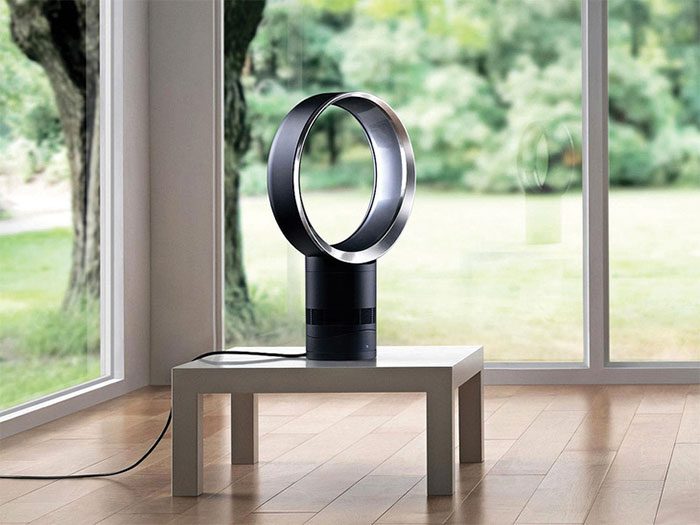
A bladeless fan that looks straight out of a sci-fi movie. (Image: Improb).
Additionally, there are giant fans that help ventilate structures with poor natural airflow, such as tunnels and parking garages…
Beyond its original purpose of cooling people, the fan has become a highly applicable invention, present in many modern conveniences. It’s hard to imagine a world without fans.




















































